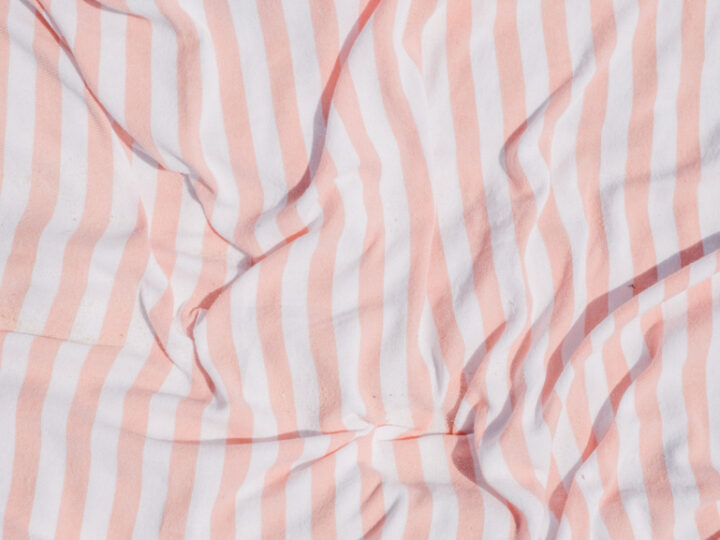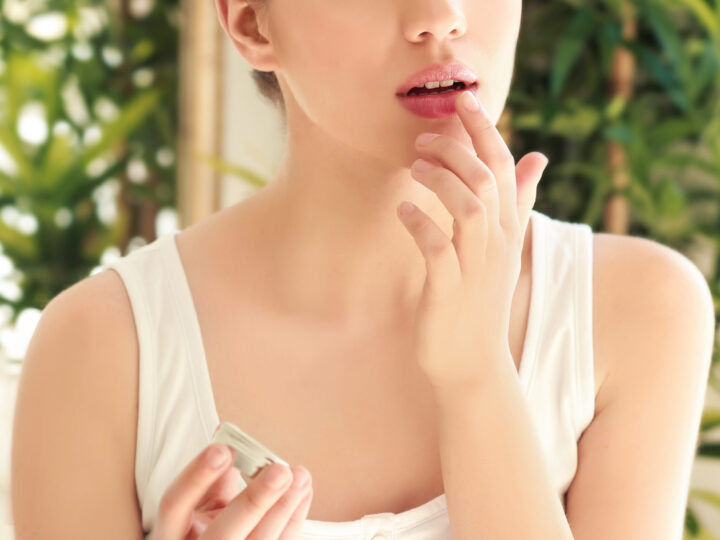ACUPUNCTURE 101
Everything You Need to Know, And Then Some
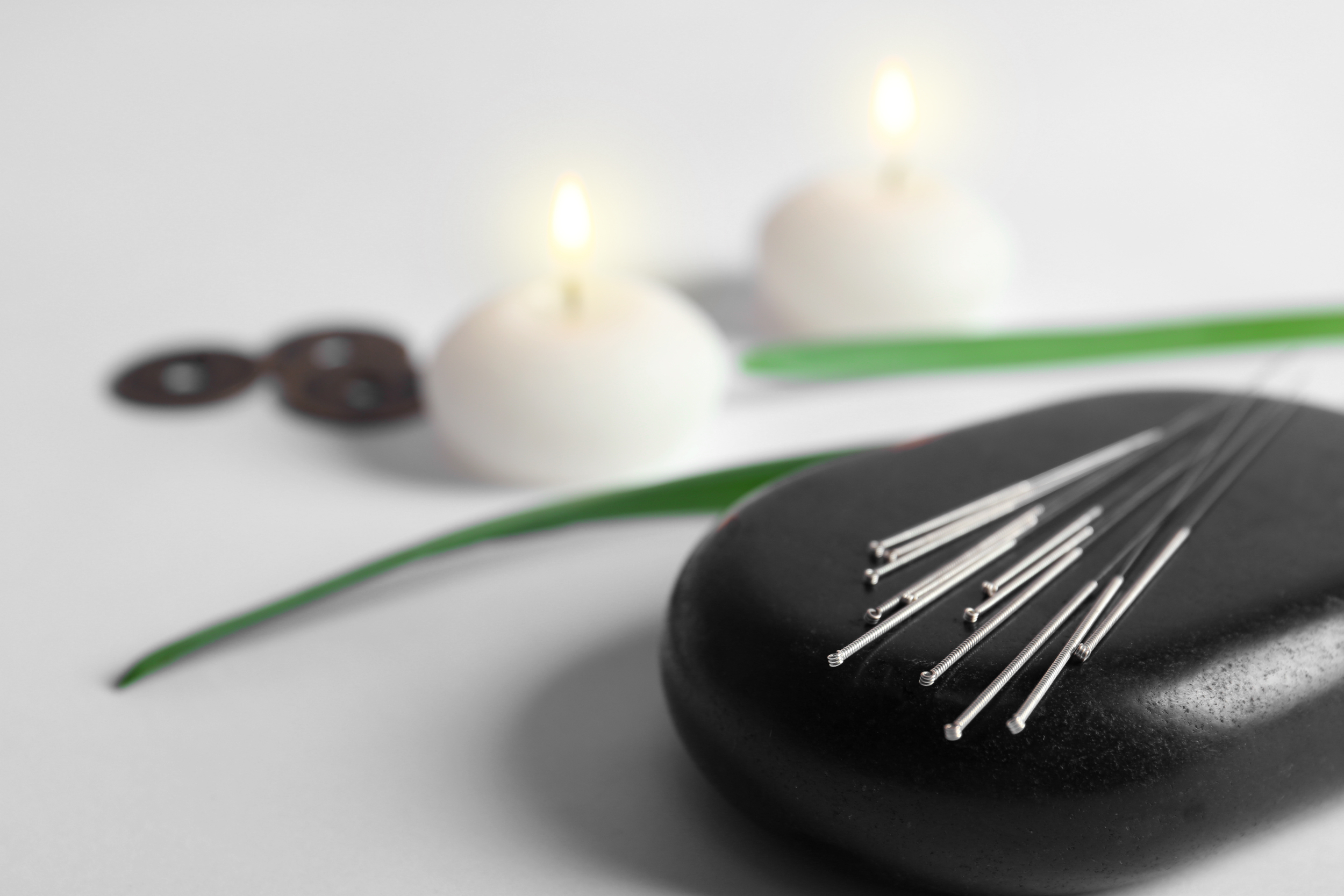
Whether you think it’s cool or crazy, there’s one word that comes to mind when people hear the word ‘acupuncture’. Needles. Believe it or not, this ancient holistic wellness treatment is more involved than just a few pokes with needles. As one of the main treatments of Traditional Chinese Medicine (TCM), acupuncture has been used for thousands of years to help treat many different kinds of conditions and promote general wellness.
What is Acupuncture?
Try to think of acupuncture as a type of physical therapy. If you have an injury that is limiting your ability to walk, your physical therapist will walk you through exercises to help strengthen and reorient your body. Over time, those functions needed to walk will be restored. Acupuncture works in a similar way. It’s designed to work with the existing energy a person has in their body, and simply redirect and rebalance the energy that isn’t flowing correctly.
But what about the needles? Glad you asked. The needles are simply the tools used to stimulate the right points on or beneath the skin’s surface to get that energy flowing the right way again. It’s important to note that acupuncture isn’t a cure-all solution to a condition. In fact, most TCM practitioners and acupuncturists are very open about the need for patients to combine acupuncture with other therapies for best results. These could include herbal treatments, lifestyle or diet adjustments, and the suggestions of your Western medical professionals.
To best understand acupuncture, first you need to understand the different elements at play. The concepts of qi and meridians are the foundation of the practice of acupuncture.
What is Qi?
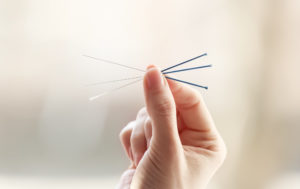 While many assume that the focus of acupuncture is to work on the nerves or specific pain points, that’s only partially true. While the feeling of relief in pain points might be a goal of the treatment, the real work is being done on a patient’s qi.
While many assume that the focus of acupuncture is to work on the nerves or specific pain points, that’s only partially true. While the feeling of relief in pain points might be a goal of the treatment, the real work is being done on a patient’s qi.
Qi (pronounced ‘chee’), is the innate energy that flows through every inch of our bodies. In fact, it flows through everything. From the plants on your windowsill to the food you eat to your cell phone, everything has qi. In TCM, qi is important as it’s seen as the true life force and essence of a person. When there is an issue with the qi, it can create imbalances that result in uncomfortable symptoms or more complicated conditions throughout the body.
Issues with qi are typically referred to in two categories; qi deficiency and qi stagnation. A qi deficiency means that a particular organ or organ system is lacking the energy it needs to work as usual. When an organ can’t work as efficiently or thoroughly as it was designed to, it causes seriously unpleasant issues. Symptoms of various qi deficiencies could include diarrhea, fatigue, or nausea.
Qi stagnation basically means that there is an excess of energy flowing through a particular area. This can cause a blockage, or build-up, or overwhelm an organ. Symptoms of qi stagnation might include headaches, pain, inflammation, high blood pressure, anxiety, or depression. Acupuncture can target these qi issues and restore harmony to the affected systems. A TCM practitioner would reference this as “tonifying” qi deficiencies and “dispersing” qi stagnation.
What Are Meridians?
Meridians are the various pathways inside the body through which qi flows. In total, it’s said that there are over 400 jingmai, or meridian pathways making up the primary system. Of these 400, there are further classifications dictating the functions of various meridian groupings. Some meridians act like ramps or overpasses to connect the meridians together. Others link to certain areas of the body like the joints, tendons, and superficial layers.
However, the most commonly referenced meridians are a set of 12 known as the primary meridians. These 12 cover the major organ system (zang-fu) and take care of the transportation of both qi and blood. The primary meridians include: 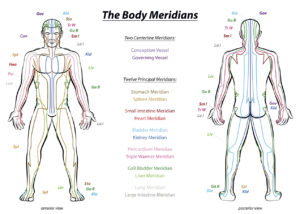
- Heart
- Lung
- Pericardium
- Small Intestine
- Large Intestine
- Sanjiao
- Liver
- Kidney
- Spleen
- Urinary Bladder
- Gall Bladder
- Stomach
Of the 12, six are considered yin and the other half yang. Yin and yang are two ways of describing qi. They hold equal yet opposite qualities and are both needed to maintain a healthy and functioning body. That’s why the meridian system is divided equally between the two types. The primary meridians are then further classified by location. Three yin and three yang meridians are assigned to the arm, and the other six are assigned to the leg.
Arm: yin meridians – heart, lung, and pericardium; yang meridians – small intestine, large intestine, and sanjiao
Leg: yin meridians – liver, kidney, spleen; yang meridians – urinary bladder, gall bladder, and stomach
Meridians are important in acupuncture because they are the keepers of the qi, which is what an acupuncturist is seeking to stimulate or balance. An acupuncturist must have an in-depth understanding of the meridian pathways and connections in order to create the appropriate acupuncture treatment plan for each patient. Along the meridians lie acupuncture points, and it’s here that the needles are inserted to address certain imbalanced meridians.
How Does Acupuncture Work?
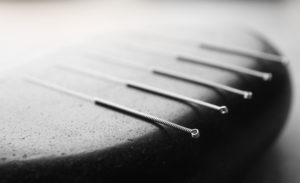 Before any needles come into play, the TCM practitioner will consult with the patient to determine their specific needs and create a plan of treatment. This plan will likely include a projected number of acupuncture treatments they believe are needed to improve the concern at hand. The practitioner or acupuncturist may ask the patient to remove some articles of clothing in order to gain access to the right points.
Before any needles come into play, the TCM practitioner will consult with the patient to determine their specific needs and create a plan of treatment. This plan will likely include a projected number of acupuncture treatments they believe are needed to improve the concern at hand. The practitioner or acupuncturist may ask the patient to remove some articles of clothing in order to gain access to the right points.
They will then insert several acupuncture needles into the body in very specific areas, known as acupuncture points, or acupoints. The needles used in acupuncture are much smaller than you might think. They’re very long and thin, so much that they’re quite flexible. These needles are also much less scary-looking than the medical needles used to give injections that you might be used to seeing in Western medicine.
The needles will be left in place for around 45 minutes, although some treatments might vary from 15 minutes to an hour. Treatment times are planned around 15 minute intervals, because it is believed that the body’s energy takes this amount of time to cycle through. Two to three full cycles of energy are typically required for acupuncture treatments.
What Are Acupuncture Points?
In TCM, the acupuncture points are viewed as gateways to the inner qi flowing through their meridians. They mark clear access points for the acupuncturist or TCM practitioner. From a Western perspective, acupuncture points are various locations across the boy that contain many nerve endings, capillaries, and lymphatics. These elements are each able to trigger certain bodily processes, from chemical releases to physiological changes.
Unsurprisingly, these high-sensory points are where the acupuncturist will place the needles. When the needle is inserted it begins a chain-reaction. First, it wakes up the sensory receptor, which stimulates the nerve, which then sends a pulse of energy to several systems. These include the brain, hormones, and glands; all of which control a large number of bodily functions between them. Acupuncturists understand the connections between each point and the various chain reactions they’re connected to.
Benefits of Acupuncture
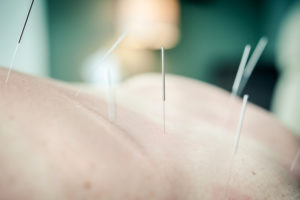 As mentioned above, acupuncture isn’t seen as a single cure for conditions, but rather an important therapy used in tandem with other methods. The natural cocktail of endorphins and neurotransmitters that are released by stimulation of the nerves is said to be a painkiller more powerful than most pills you can pick up at the drugstore. In this way, acupuncture is often used to help ease the pain patients might be experiencing from chronic conditions, post-operation, or those undergoing chemotherapy.
As mentioned above, acupuncture isn’t seen as a single cure for conditions, but rather an important therapy used in tandem with other methods. The natural cocktail of endorphins and neurotransmitters that are released by stimulation of the nerves is said to be a painkiller more powerful than most pills you can pick up at the drugstore. In this way, acupuncture is often used to help ease the pain patients might be experiencing from chronic conditions, post-operation, or those undergoing chemotherapy.
It’s also used for tension-relief for those suffering from an injury from misuse or overuse. If you pulled a muscle hitting the gym too hard, or are an athlete who suffered an injury during the big game, acupuncture might be a good option to help you on your road to recovery. Mental health is another major category of treatment for acupuncture. Those looking for ways to help maintain lower stress levels, or improve symptoms of anxiety or depression have found support from regular acupuncture treatments.
There’s a reason why lovers of acupuncture keep coming back again and again. This practice has been said to help ease the symptoms or even cure several different conditions, from mental health concerns, to general pain from injuries, to reproductive system issues. Here’s a bird’s eye view at some of the issues that have been treated using acupuncture:
-
- Anxiety
- Depression
- Insomnia
- Headaches/Migraines
- Labor pain
- Menstrual cramps
- Irregular cycles
- PMS
- Infertility
- Menopausal symptoms
- Allergies
- Respiratory disorders
- Colds and flus
- Pain
- Back-specific pain
- Neck-specific pain
- Dental pain
- Arthritis
- High Blood Pressure
- High cholesterol
- Autoimmune conditions
- Type 2 Diabetes
- Addictions
- Thyroid imbalances
- Nausea or vomiting from chemotherapy or operations
- IBS
- Stomach Problems
Who Should Get Acupuncture Treatments?
In most situations, almost anyone can benefit from acupuncture treatments. Acupuncture can be performed on children, as well as adults. Because it’s designed as a therapy to help fix painful or uncomfortable conditions, it’s easily able to be added into existing treatment plans. Talk with your doctor about starting acupuncture treatments in conjunction with their efforts. Acupuncturists and TCM practitioners are trained to create complementary treatments and can coordinate with your other doctors or specialists to make a plan that’s right for you.
Even if you aren’t suffering from a specific condition, acupuncture can be used to maintain general wellness and keep your qi flowing properly. Many people attend regular acupuncture treatments as a sort of “tune up” to check in with their bodies and to make sure everything is running smoothly. This is a preventative measure for many and can help detect energy imbalances early on before they result in serious symptoms.
Is Acupuncture Safe?
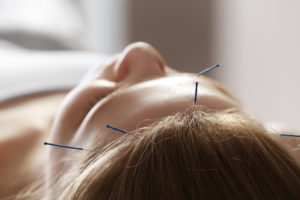 When practiced correctly by a licensed acupuncturist, acupuncture treatments are very safe. The key is ensuring your TCM practitioner or acupuncturist is licensed and experienced, just as you would for any other medical professional. While the certifications are different between acupuncturists and TCM practitioners, both trainings cover the treatment acupuncture.
When practiced correctly by a licensed acupuncturist, acupuncture treatments are very safe. The key is ensuring your TCM practitioner or acupuncturist is licensed and experienced, just as you would for any other medical professional. While the certifications are different between acupuncturists and TCM practitioners, both trainings cover the treatment acupuncture.
Traditional Chinese Medicine is typically taught in post-graduate programs, so students often have first completed a four-year Bachelor’s program prior to entry. There are Master’s degrees available in Acupuncture (M.S.A.C.) as well as Traditional Oriental Medicine (M.S.T.O.M.). These programs require a combination of lecture-style learning and hands-on work and often add up to around 3,500 hours of training. At the end of the program, students are required to take written and practical exams at the state and/or national level in order to be granted a license and are subject to continuing education requirements. There are also doctorate-level degrees available, requiring an extra two years of study.
There are also “certified acupuncturists” whose training is actually in chiropractic, physical therapy, medicine or podiatry with an add-on course that certifies them in acupuncture. They have significantly less training in needling and very little training in Traditional Chinese Medicine. Chiropractors, for example, can take a 104-hour certification course. Doctors in New York can take a 200 hour video course with 60 hours of clinic. In some states MDs may practice acupuncture with no additional certification. Podiatrists use only leg points but leg points are on meridians that affect the whole body. PTs often call their acupuncture “dry needling” and have similarly minimal training. You can avoid this by using a Licensed Acupuncturist.
Many people are worried that the treatment will be painful. In most cases, the opposite is true. Most people report that acupuncture treatments are highly relaxing. Some acupuncturists have reported patients feeling so calm and sleepy after a treatment that they needed to drink some water and “wake up” before leaving the office to drive. There are a few minor side effects that could occur in the specific areas the needles have been inserted. These include light bruising, small amounts of bleeding, temporary nerve pain, soreness or swelling. All of these potential side effects are temporary and tend to go away with time.
If you’re concerned about your acupuncture treatment, be sure to check your acupuncturists’ credibility and licenses. You should also feel comfortable communicating your concerns about the acupuncture treatment. Your acupuncturist has a number of needle-free techniques, so ask iIf you’re afraid of needles. If you or would like a more in-depth explanation of the steps of your treatment, your practitioner will be able to answer all your questions and help make the environment more comfortable.
The Origins of Acupuncture
Originating in China, acupuncture has been practiced there for approximately 2,500 to 3,000 years. It’s believed that the Ming Dynasty (1368-1644) is responsible for establishing acupuncture as we know it today. As methods of transportation continued to advance, the practice spread across Asia.
Though it’s been practiced in Asia for centuries, acupuncture only found its way to Europe and the United States between the sixteenth to nineteenth centuries. Even still, it wasn’t viewed as a known practice to most Westerners until well into the 1970’s, after President Nixon’s 1972 visit to China. In 1997, the United States’ National Institutes of Health acknowledged acupuncture as an effective therapy for a number of conditions. Since then, acupuncture has seen a surge of popularity and has become a more normalized treatment option.
Comments (0)
Leave a reply
You must be logged in to post a comment.



